| deutsch | English |
Niederlande 14. – 15. Juni 2008
Am 14. und 15. Juni 2008 besuchten wir ein Hochmoor in den Niederlanden.
Aus Gründen des Artenschutzes möchten wir keine genauere Region nennen.
Am ersten Tag war es regnerisch und kalt bei etwa 13°C, am zweiten Tag war es wechselhafter, zeitweise schien die Sonne.
Insgesamt konnten wir an beiden Tagen 9 Kreuzottern (Vipera berus berus) sehen.
Sympatrisch zu den Kreuzottern kamen in dem Habitat auch Amphibien vor, so konnten wir beispielsweise Pelophylax ssp. und den Moorfrosch (Rana arvalis) in großen Stückzahlen beobachten.
Gesehene Exemplare:
Reptilien
|
Wissenschaftlicher Name |
Deutscher Name |
Anzahl |
|
Vipera b. berus |
Kreuzotter |
9 |
Amphibien
|
Wissenschaftlicher Name |
Deutscher Name |
Anzahl |
|
Pelophylax ssp. |
|
mehrere Dutzend |
|
Rana
arvalis |
Moorfrosch |
mehrere Dutzend |
|
Lissotriton vulgaris |
Teichmolch |
1 |
Nicht gefundene Reptilien:
|
Wissenschaftlicher Name |
Deutscher Name |
|
Zootoca vivipara |
Waldeidechse, Bergeidechse |
Netherlands 14th – 15th June 2008
On 14th and 15th June 2008 we visited an upland moor in the Netherlands.
Due to the protection of species we wouldn’t like to announce a detailed region.
The first day was rainy and cold with temperatures about 13°C. The second day was unsettled with sunshine from time to time.
Altogether we could find 9 Adders / Common Vipers (Vipera berus berus) on both days.
Sympatric to the Adders are in this habitat some amphibians. So we saw especially the Moor Frog (Rana arvalis) in a high quantity.
Observed species:
Reptiles
|
Scientific
name |
English
Name |
Quantity |
|
Vipera
b. berus |
Adder,
Common Viper |
9 |
Amphibians
|
Scientific
name |
English
Name |
Quantity |
|
Pelophylax ssp. |
|
dozens |
|
Rana
arvalis |
Moor
Frog |
dozens |
|
Lissotriton
vulgaris |
Common Newt |
1
|
Missed reptiles:
|
Scientific name |
English Name |
|
Zootoca vivipara |
Viviparous Lizard |
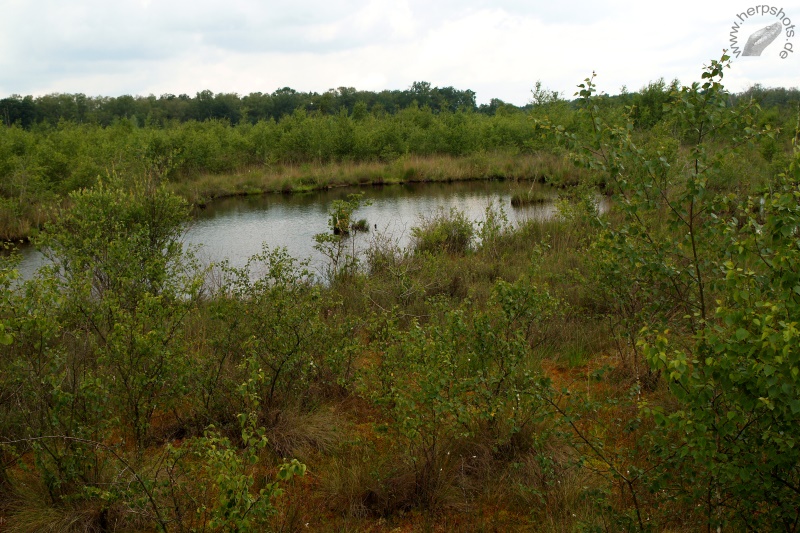
Biotopaufnahme. Hier hätten wir damit gerechnet, Zootoca vivipara zu
finden. /
Habitat. We thought that we could find some Zootoca vivipara.
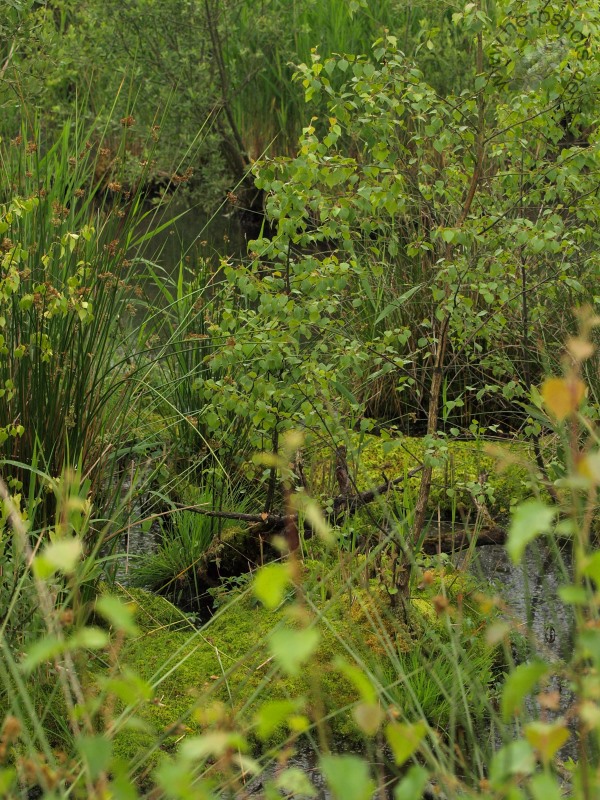
Am Gewässerrand sah man immer wieder sich sonnende Moorfrösche. /
You can see a lot of basking moor frogs on the water sides.

Sonnender Frosch, Pelophylax ssp. /
Basking frog, Pelophylax ssp.
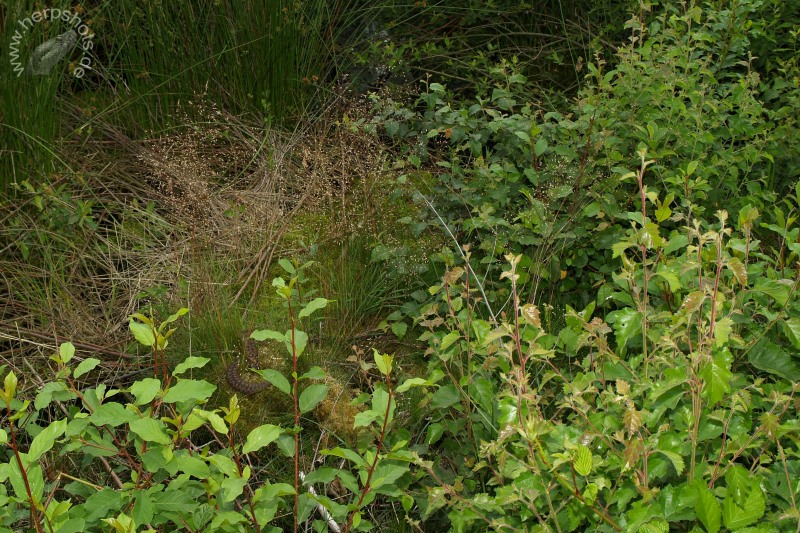
Ausschnitt aus dem Lebensraum einer weiblichen Vipera b. berus. /
Detail of the habitat of a female Vipera b. berus.
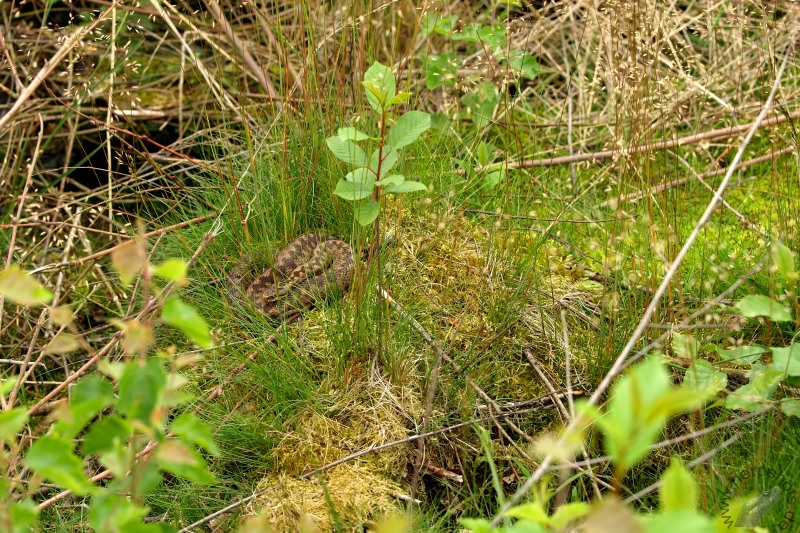
Diese Vipera b. berus konnten wir an beiden Tagen über mehrere Stunden beim
Sonnen beobachten.
We could observe this Vipera b. berus basking for hours on both days.
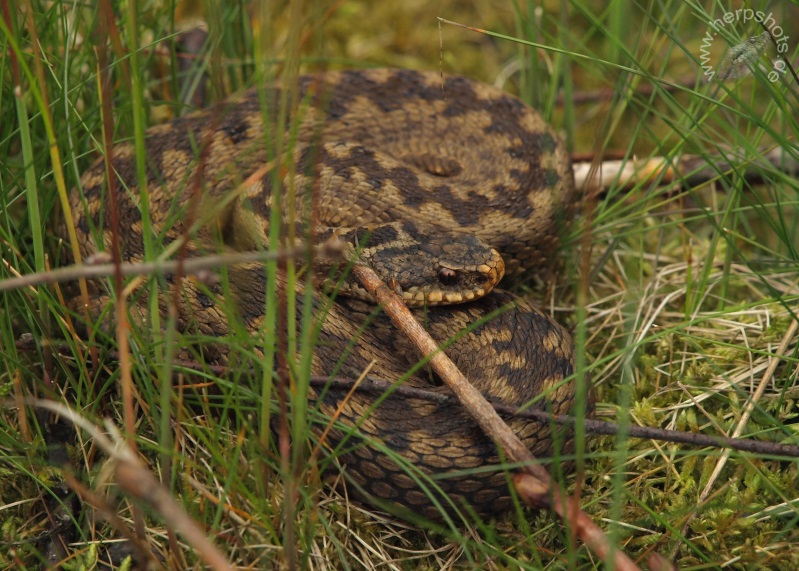
Vipera b. berus
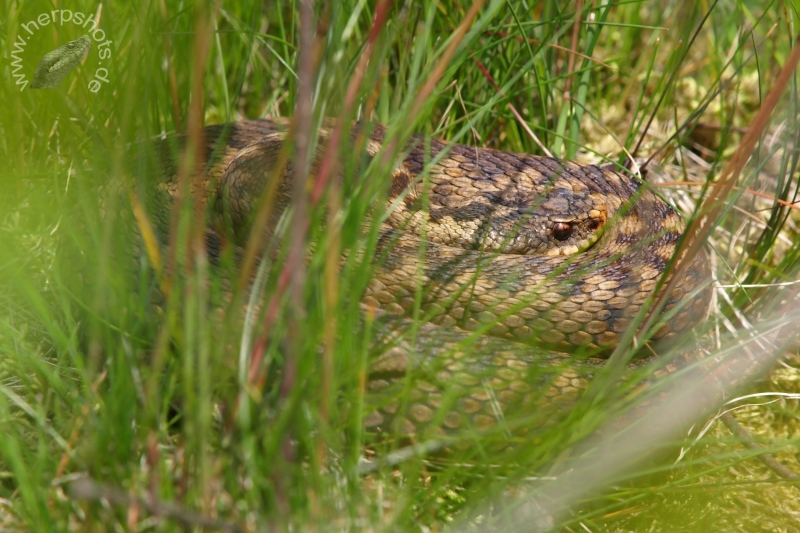
Vipera b. berus
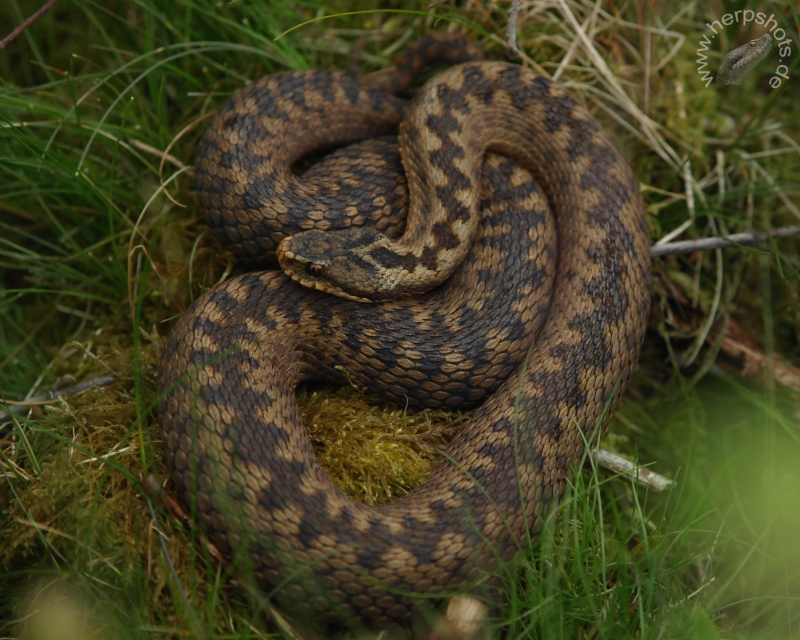
Vipera b. berus
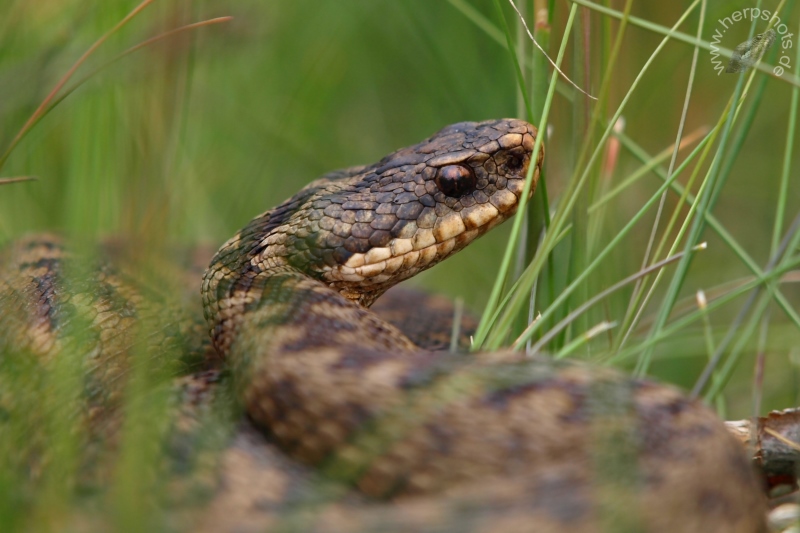
Portait der Vipera b. berus aus den vorherigen Bildern. /
Portrait of the Vipera b. berus from the previous pictures.
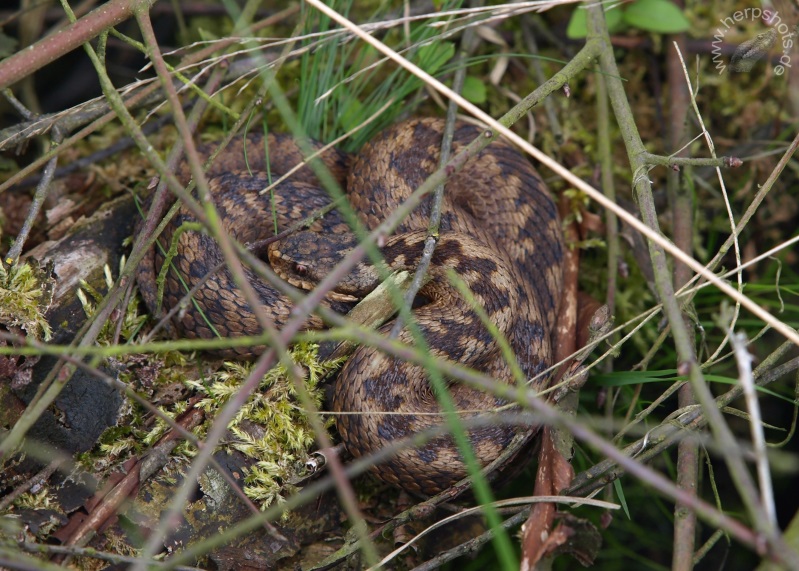
Vipera b. berus, am zweiten Tag sonnte sich die Kreuzotter einen Meter entfernt
von dem Sonnenplatz, den sie am vorigen Tag genutzt hatte. /
Vipera b. berus, on the second day the adder basked one meter shy of the place
it used the day before.
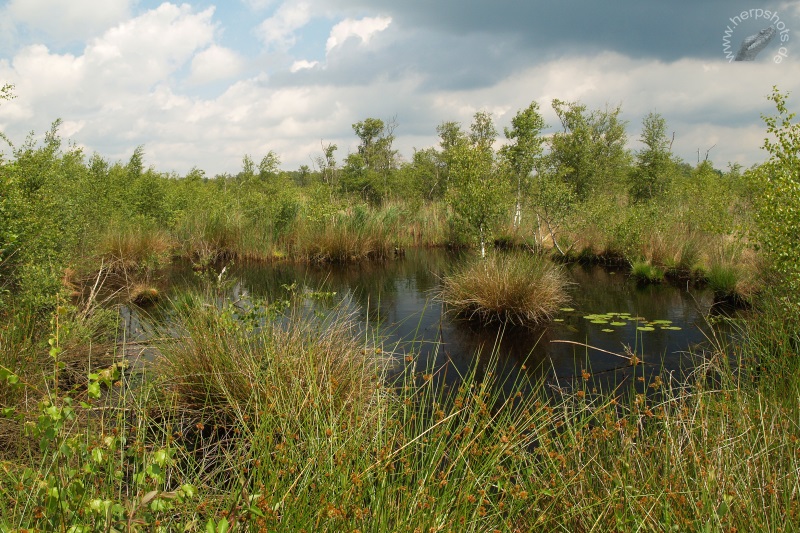
Biotopaufnahme /
Habitat
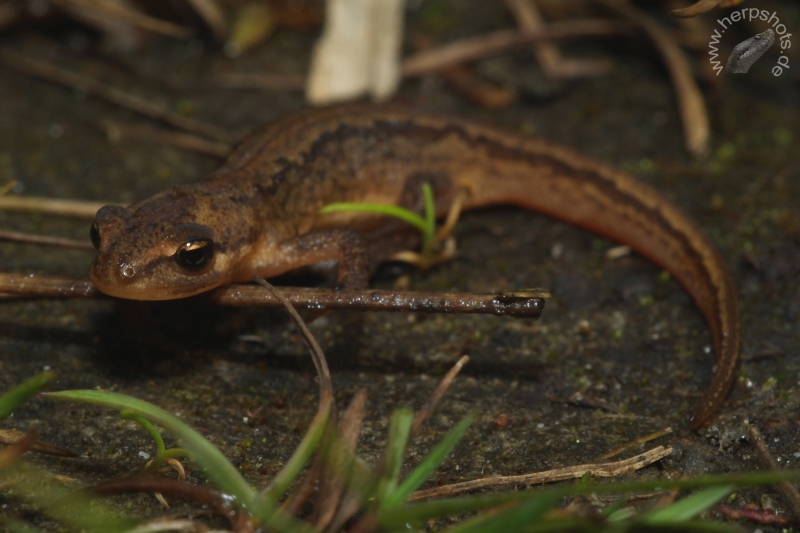
Lissotriton vulgaris, das einzige Exemplar, das wir sahen. /
Lissotriton vulgaris, the only one we saw.

Pelophylax ssp.. Auf der Suche nach den Kreuzottern trafen wir immer wieder auf die
in diesem Habitat sehr verbreitete Froschart. /
Pelophylax ssp.. Searching for adders we often came across this species, that is
very common in this habitat.

Pelophylax ssp.
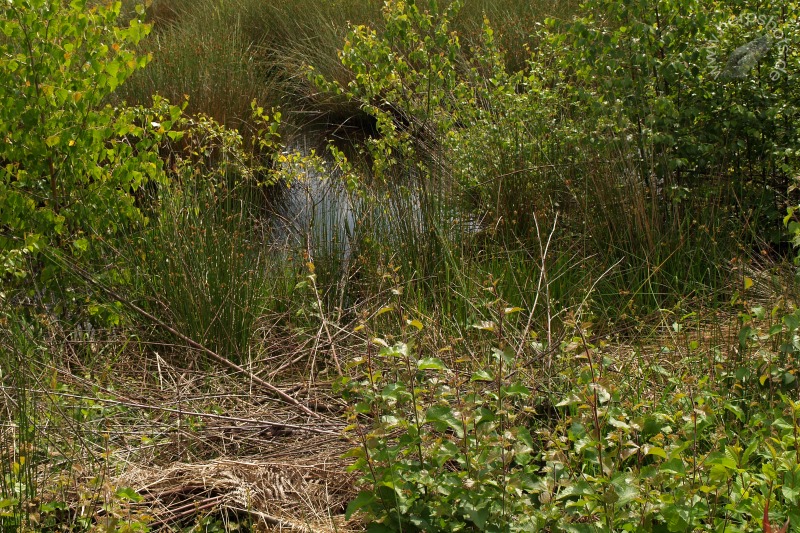
Biotopaufnahme von Vipera b. berus, die sich auf dem Reisighaufen sonnt. /
Habitat of Vipera b. berus which is basking on the dry sticks.
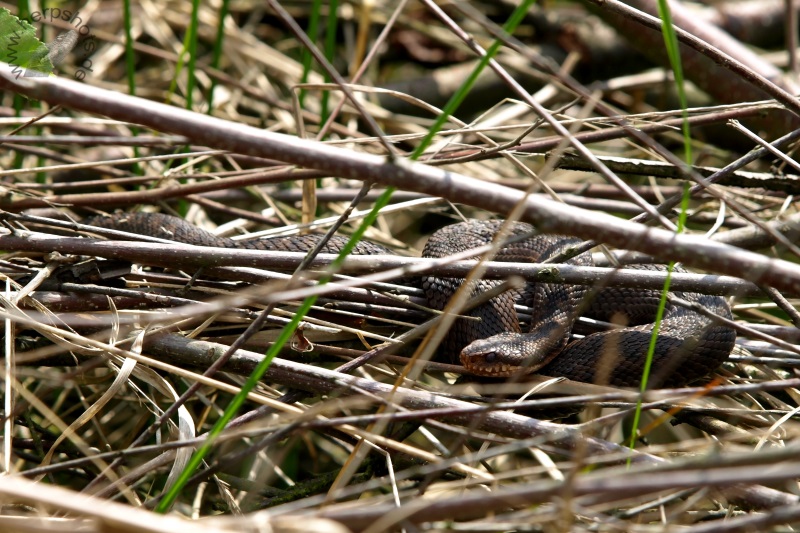
Aufnahme der Vipera b. berus aus dem vorigen Bild. /
Portrait of the Vipera b.
berus
from the previous
picture.
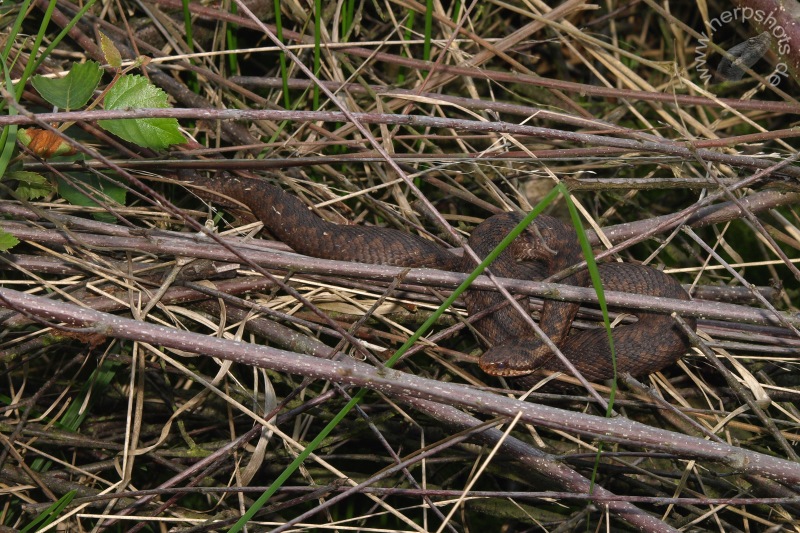
Vipera b. berus
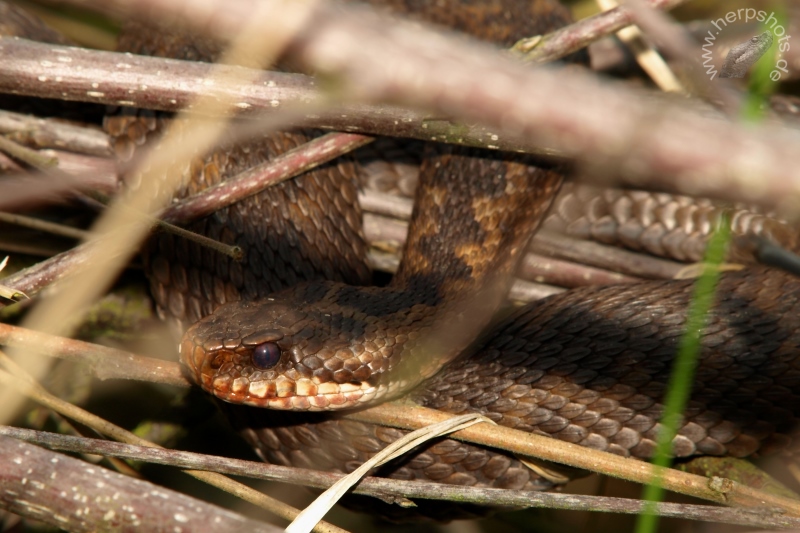
Portrait der Vipera b. berus aus den vorigen Bildern. /
Portrait of the Vipera b.
berus
from the previous
picture.

Pelophylax ssp.. Die Frösche sonnten sich oftmals in unmittelbarer Nähe der
Kreuzottern. /
Pelophylax ssp.. This frogs often basked directly near the adders.

Speer-Azurjungfer (Coenagrion hastulatum) /
Coenagrion hastulatum
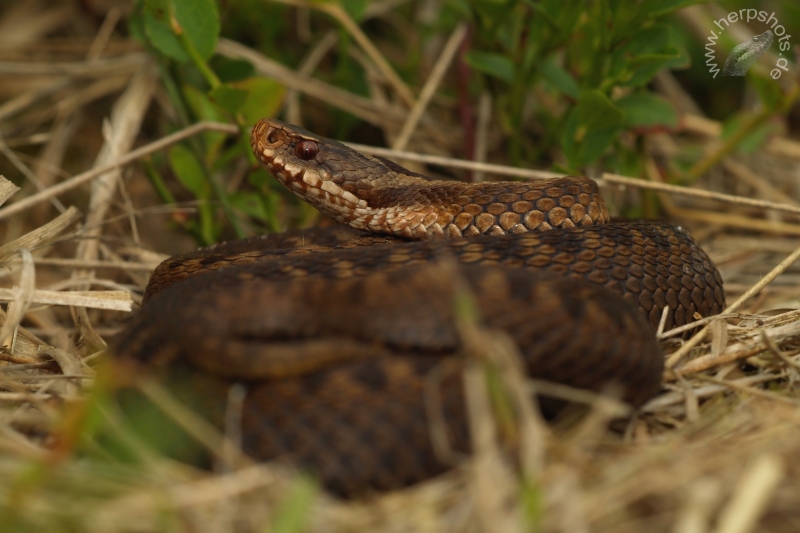
Ein weiteres Vipera b. berus Weibchen. /
Another female Vipera b. berus.
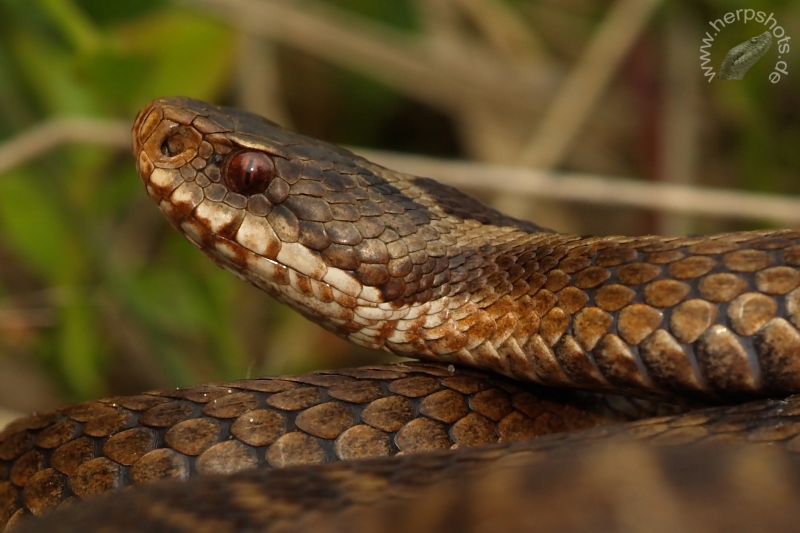
Portait der Vipera b. berus aus dem vorigen Bild. /
Portrait of the Vipera b.
berus
from the previous
picture.
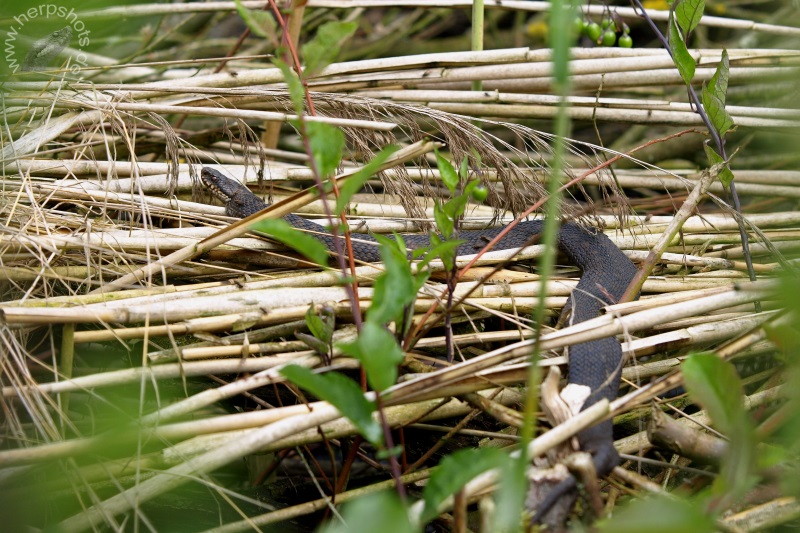
Erst auf dem Foto war das Zickzackmuster dieser besonders dunkel gefärbten
Vipera b. berus zu erkennen. /
The zig-zag of this special dark Vipera b. berus we saw only on the picture.
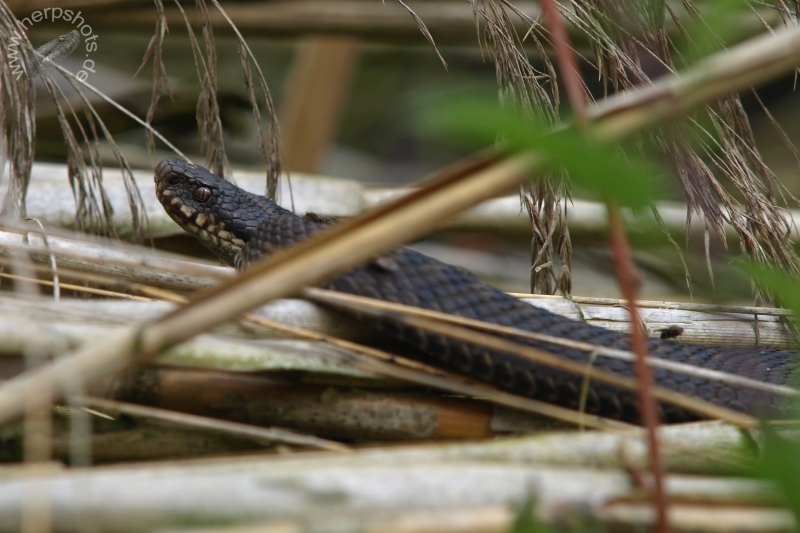
Portrait der Vipera b. berus aus dem vorigen Bild. /
Portrait of the Vipera b.
berus
from the previous
picture.

Ziegen und Schafe fungieren in den Randgebieten des Biotops als
"natürlicher Rasenmäher". /
Goats and sheep are the "natural lawn-mover" on the borders of the
habitat.